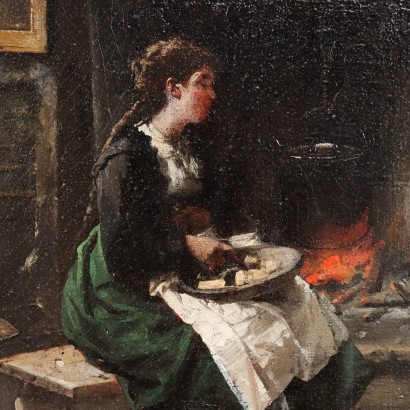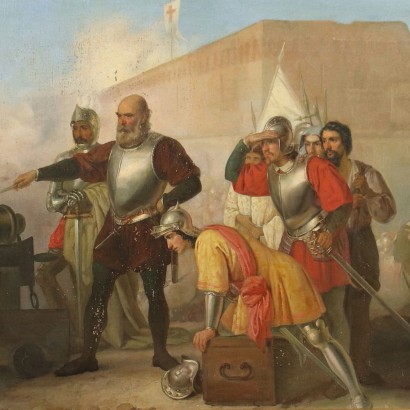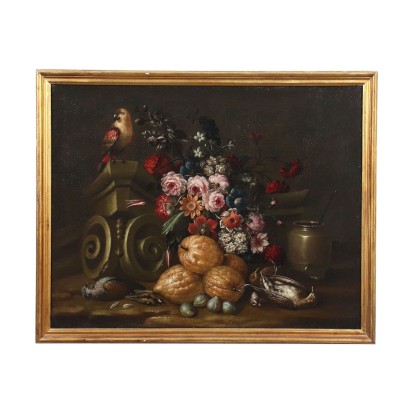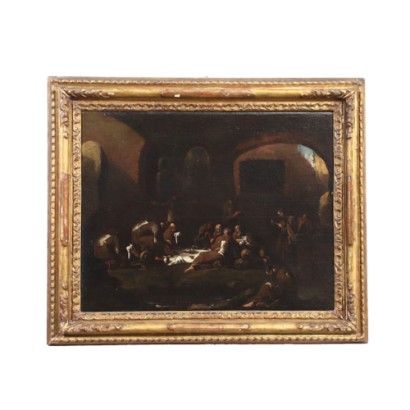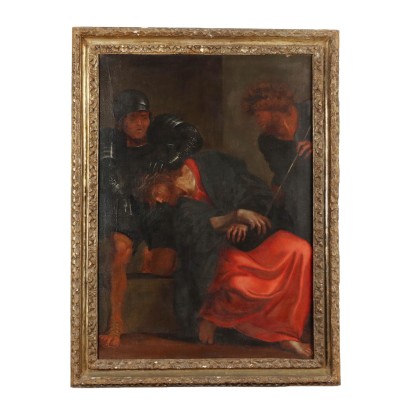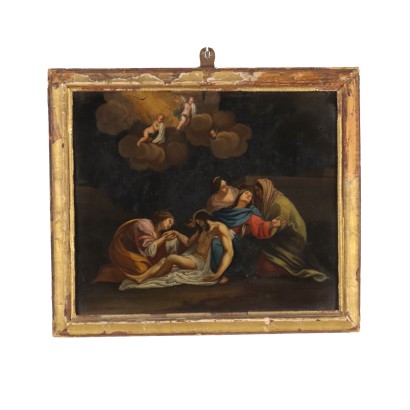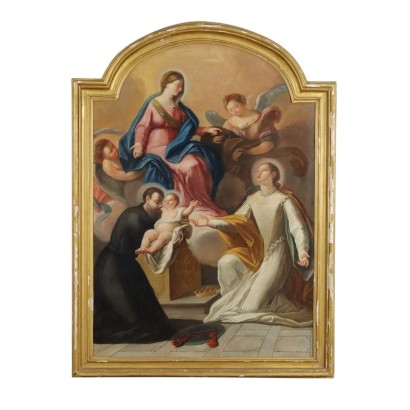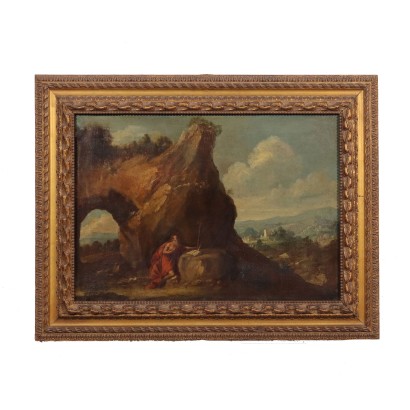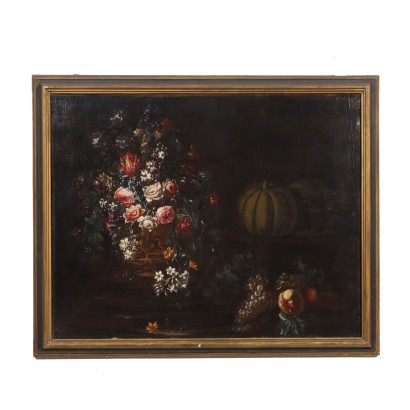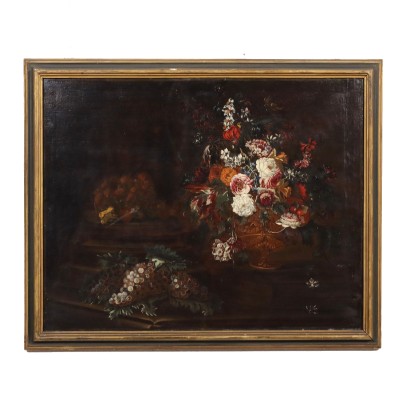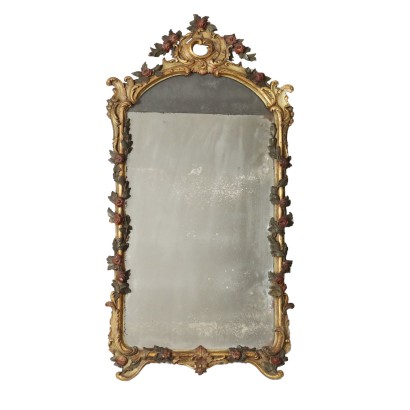D. Induno Oil on Canvas Italy XIX Century - Interior with fireplace
Features
Artist: Domenico Induno (1815-1878)
Artwork title: Interno con caminetto
Age: 19th Century / 1801 - 1900
Subject: Interior Scene
Origin: Italy
Artistic technique: Painting
Technical specification: Oil on Canvas
Description : Interno con caminetto
Oil on canvas applied to cardboard. Signed lower left. Accompanied by authentication on photo from the Orler Collection. Inside a popular house, equipped with kitchen tools, a young woman is sitting in front of the lit fireplace, intent on cleaning vegetables; from the upper left window the light of a bright and clear day enters, which radiates into the gray and poor kitchen. The work is well part of the production of Domenico Induno, the Milanese painter who was a pupil of Francesco Hayez, who after his beginnings mainly devoted to historical-Renaissance painting, from the 1950s turned his production towards genre scenes, set indoors. domestic and with poor and derelict protagonists. Intimate scenes, often with few characters, turned into a melancholy and modest emotional tone, sometimes even desolate, which however were pictorially animated by that quick and flickering brushstroke, by that mobile and brilliant touch, which would increasingly characterize the style of the Induno . He achieved great success with his production, which earned him numerous awards and a following among the younger painters. He was also an established portrait painter. The work is presented in a style frame.
Product Condition:
Product in good condition, with small signs of wear.
Frame Size (cm):
Height: 62,5
Width: 58
Artwork dimensions (cm):
Height: 43,5
Width: 39
Authentication on photo
Additional Information
Artist: Domenico Induno (1815-1878)
Born in Milan in 1815, Domenico Induno enrolled at the Brera Academy when he was still sixteen, where he found masters such as Luigi Sabatelli and Pompeo Marchesi (who appreciated the qualities of the young artist so much that they bought his drawings) and Francesco Hayez, who would have constituted for there. an essential and lasting point of reference. From the beginning, the course of study of the I. it was dotted with accolades. From 1837 the painter began to exhibit at the annual exhibitions of Brera, winning in 1839 the grand prize of painting of the Academy, which earned him a gold medal, exemption from Austrian military service and a prestigious artistic commission, or the commission of a canvas for Ferdinand I, (The Prophet Samuel anoints King Saul), who went to enrich the Imperial Galleries of Vienna). From the very beginning the salient features of his artistic personality were highlighted, in particular his natural ease of execution, associated with marked narrative qualities, a strong realist inclination, mastery in drawing, compositional mastery, a classicist taste, however open to pathos and to the historical epic of romanticism. Francesco Hayez himself took the young Induno to heart and followed him in his artistic training, both by putting him in contact with the main collectors and art lovers of Milan, and by directing his talent also towards the genre of the portrait, - which, while occupying a rather marginal role in his production, he was able to create with marked personality and remarkable executive finesse. In the second half of the fifth decade, genre scenes, linked to the observation of ordinary and daily life, began to become more and more frequent in the works of Induno, within a particularly lively critical debate in the 1930s and 1940s. history painting (with a noble theme and linked to the past) and genre painting (with a realist and modern subject), relating to ethical and didactic value. For Induno these were years of growing notoriety, success and economic well-being, during which the I. he began to exhibit continuously also at the Promoters of Florence, Turin and Genoa. He also achieved an authority and a conspicuous following among the younger painters both in terms of technical peculiarities and in terms of thematic predilections, partly generating a wave of affectionately intimate and melancholy genre scenes.
Age: 19th Century / 1801 - 1900
19th Century / 1801 - 1900
Subject: Interior Scene
Artistic technique: Painting
La pittura è l'arte che consiste nell'applicare dei pigmenti a un supporto come la carta, la tela, la seta, la ceramica, il legno, il vetro o un muro. Essendo i pigmenti essenzialmente solidi, è necessario utilizzare un legante, che li porti a uno stadio liquido, più fluido o più denso, e un collante, che permetta l'adesione duratura al supporto. Chi dipinge è detto pittore o pittrice. Il risultato è un'immagine che, a seconda delle intenzioni dell'autore, esprime la sua percezione del mondo o una libera associazione di forme o un qualsiasi altro significato, a seconda della sua creatività, del suo gusto estetico e di quello della società di cui fa parte.
Technical specification: Oil on Canvas
The oil painting is a painting technique using powder pigments mixed with bases in inert and oils. 


